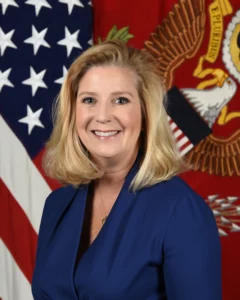
By Christopher Hurd, Army News Service
Making the Army a data-centric, technology-driven service is one of the Secretary of the Army Christine E. Wormuth’s top objectives.
During her keynote speech to kick off the 2023 Association of the U.S. Army Annual Meeting and Exposition in Washington, D.C. this month, she spoke about the importance this plays in fielding the Army of 2030.
“We must continue to embrace innovation and transformation or risk failing to address future threats,” she said. “In close partnership with industry, the Army has pressed ahead and stayed on track to implement our most ambitious modernization effort in 40 years. With the introduction of each new system, we continue to increase our force’s capability to respond to various threats and serve as a credible deterrent to our adversaries.”
To expedite changing the Army and its business and operating model to leverage data strategically, the service created the Digital Transformation Strategy in 2021.
This outlines three key areas the Army must improve to leverage innovative and transformative technologies: modernization and readiness, optimized digital investments, and a technically savvy, operationally effective digital workforce.
In the last two years, the Army has been laying the foundation of the strategy by implementing the right policy, guidance and resourcing so it can quickly integrate technologies in the future.
“I think that is a big piece of where we are moving right now, and as you look at the next couple years, it really is about maturing that foundation,” Army Chief of Information Leonel Garciga said during an AUSA panel at the conference. “I don’t care how good an algorithm is. If you don’t trust the platform, or you don’t trust the network, do you trust the output of that algorithm? I think the answer is no.”
One of the key foundational pieces is making sure that the data being collected is properly labeled across the entire Department of Defense. This will allow the systems to communicate and scale quickly.
“We’ve got to ensure across all the functional communities in the Army, we have a common way of tagging, governing and ensuring that the data is accurate,” said Under Secretary of the Army Gabe Camarillo, who serves as the Army’s chief operating and management officer. “Once we do that, then I think we’ll be able to really start humming.”

The Army is taking an enterprise approach to change and transform faster. It is working on a more unified and coherent network. It’s changing how it trains Soldiers to use and interact with emerging technologies. It’s also adopting industry best practices for software development and updating its acquisition policy.
“In order for us to succeed, the challenges aren’t really technical because industry has most of this stuff already figured out,” Camarillo said. “The real question is how quickly can we adopt and change our processes to make the most advantageous use of capabilities that are already in the market.”
All this work is being done to give commanders and Soldiers on the battlefield the timely information they need to make informed decisions.
“So much of what we do involves software, involves data, it’s going to impact the entire range and spectrum of military operations in the future,” Camarillo said. “For us to maintain [our technological] advantage, we absolutely, as an imperative, have to get this right.”
